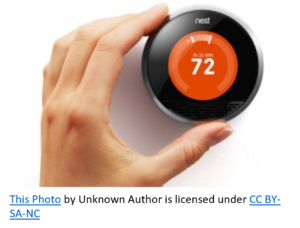
This statement is a pun intended to point out when people are in a state of denial about their future. I am alarmed that so many in the energy industry are in this state and not looking at simple facts before they make grand and glorious claims stating they will save the planet for future generations. I firmly believe they are denying simple facts as previous blogs have shown.
It was therefore refreshing to see so many new recent forecasts that temper this enthusiasm, starting with a feature article in the Wall Street Journal this morning: https://climate.cmail19.com/t/d-e-elutuuy-drtjurjkiu-r/
It caught my eye because it pointed out the opportunity to use waste heat recovery in industrial processes to reduce energy use and thereby the emissions of big industry. I spent most of my adult life in this area and wrote several books on the subject. I even made the front page of the Wall Street Journal with my work with Southern Company. So when I read the ways they were thinking it would work, it struck me as odd that they didn’t do a little research to see what we learned about the obstacles to commercialization.
But, along with all this enthusiasm came some realistic predictions about the impacts. As you check into the research referenced in this article, you come across the graphic I included as the key one in this blog. Notice that we are not going to stop using fossil fuels anytime soon, and not until well past the end of this century.
How then can we think we are not putting more carbon dioxide into the atmosphere? Am I going too fast? Maybe so. Plus, where are the zealots’ answers to how all this worldwide use of fossil fuels is somehow going to be replaced with wind and solar … which ironically use enormous amounts of fossil fuels to manufacture, ship and install. Denial is such a natural human tendency, especially when you don’t want to face the obvious facts.
For example, we are all going to die. This is not a surprise. Yet very few of us can face this fact soberly and with a planned finish to our lives. Instead, we deny the facts that emerge as early warning signs. We don’t get medical attention until it is too late. We rationalize our lives and offer ourselves excuses for this or that. We are in a state of denial.
It is interesting to read Kubler-Ross’s Five Famous Stages of Death and Dying which has five key phases, the first of which is Denial:
Phase 1: Denial is a common defense mechanism used to protect oneself from the hardship of considering an upsetting reality. Kubler-Ross noted that patients would often reject the reality of the new information after the initial shock of receiving a terminal diagnosis. Patients may directly deny the diagnosis, attribute it to faulty tests or an unqualified physician, or simply avoid the topic in conversation. While persistent denial may be deleterious, a period of denial is quite normal in the context of terminal illness and could be important for processing difficult information. In some contexts, it can be challenging to distinguish denial from a lack of understanding, and this is one of many reasons that upsetting news should always be delivered clearly and directly. However, unless there is adequate reason to believe the patient truly misunderstands, providers do not need to repeatedly reeducate patients about the truth of their diagnosis, though recognizing the potential confusion can help balance a patient’s right to be informed with their freedom to reconcile that information without interference.
Phase 2: Anger is commonly experienced and expressed by patients as they concede the reality of a terminal illness. It may be directed at blaming medical providers for inadequately preventing the illness, family members for contributing to risks or not being sufficiently supportive, or spiritual providers or higher powers for the diagnosis’ injustice. The anger may also be generalized and undirected, manifesting as a shorter temper or a loss of patience. Recognizing anger as a natural response can help health care providers and loved ones tolerate what might otherwise feel like hurtful accusations. However, they must take care not to disregard criticism that may be warranted by attributing them solely to an emotional stage.
Phase 3: Bargaining typically manifests as patients seeking some measure of control over their illness. The negotiation could be verbalized or internal and could be medical, social, or religious. The patients’ proffered bargains could be rational, such as a commitment to adhere to treatment recommendations or accept help from their caregivers, or could represent more magical thinking, such as efforts to appease misattributed guilt they may feel is responsible for their diagnosis. While bargaining may mobilize more active participation from patients, health care providers and caregivers should take care not to mislead patients about their own power to fulfill the patients’ negotiations. Again, caregivers and providers do not need to repeatedly correct bargaining behavior that seems irrational but should recognize that participating too heartily in a patient’s bargains may distort their eventual understanding.
Phase 4: Depression is perhaps the most immediately understandable of Kubler-Ross’s stages, and patients experience it with unsurprising symptoms such as sadness, fatigue, and anhedonia. Spending time in the first three stages is potentially an unconscious effort to protect oneself from this emotional pain. While the patient’s actions may potentially be easier to understand, they may be more jarring in juxtaposition to behaviors arising from the first three stages. Consequently, caregivers may need to make a conscious effort to restore compassion that may have waned while caring for patients progressing through the first three stages.
And finally, Phase 5: Acceptance describes recognizing the reality of a difficult diagnosis while no longer protesting or struggling against it. Patients may focus on enjoying the time they have left and reflecting on their memories. They may begin to prepare for death practically by planning their funeral or helping to provide financially or emotionally for their loved ones. It is often portrayed as the last of Kubler-Ross’s stages and a sort of goal of the dying or grieving process. While caregivers and providers may find this stage less emotionally taxing, it is important to remember that it is not inherently more healthy than the other stages. As with denial, anger, bargaining, and depression, understanding the stages has less to do with promoting a fixed progression and more to do with anticipating patients’ experiences to allow more empathy and support for whatever they go through.




